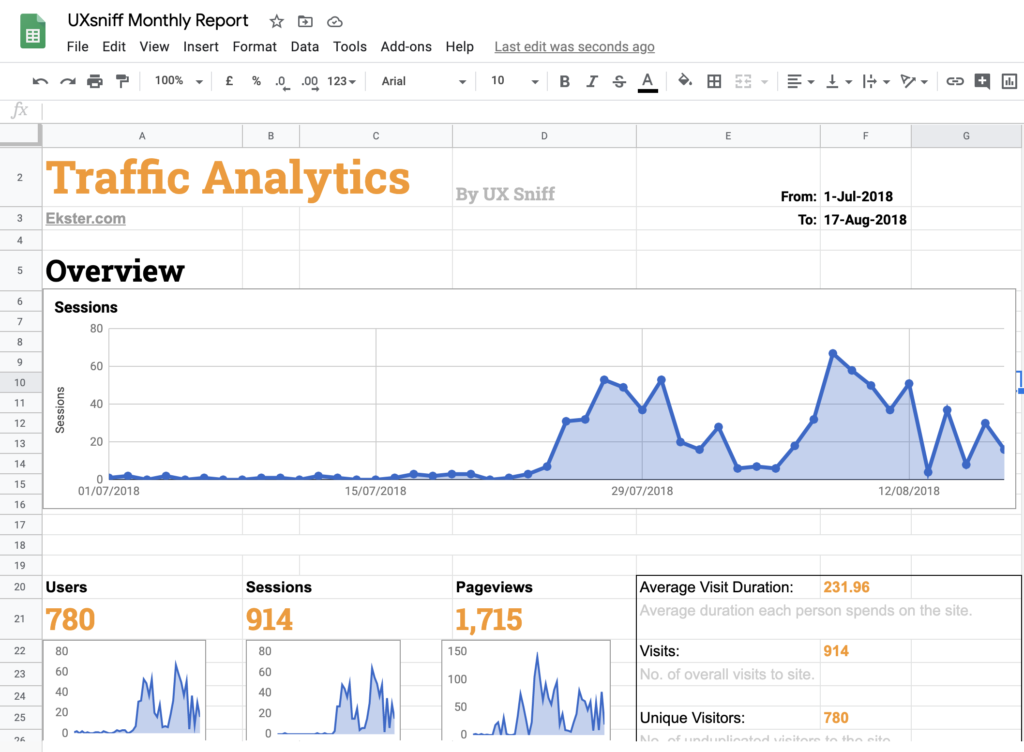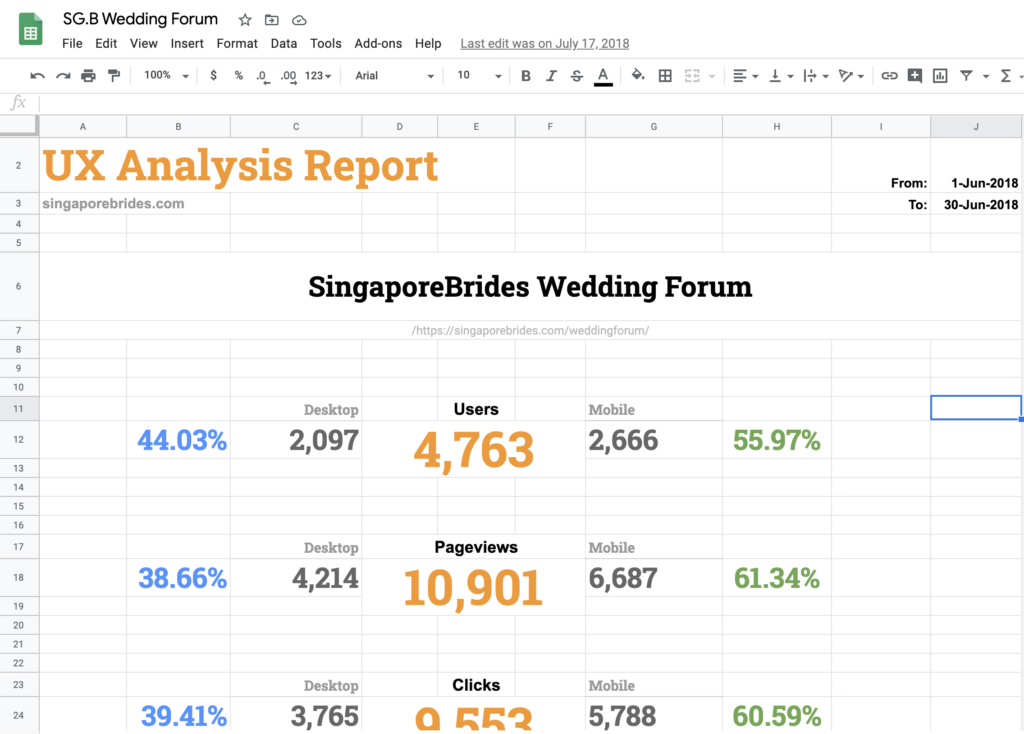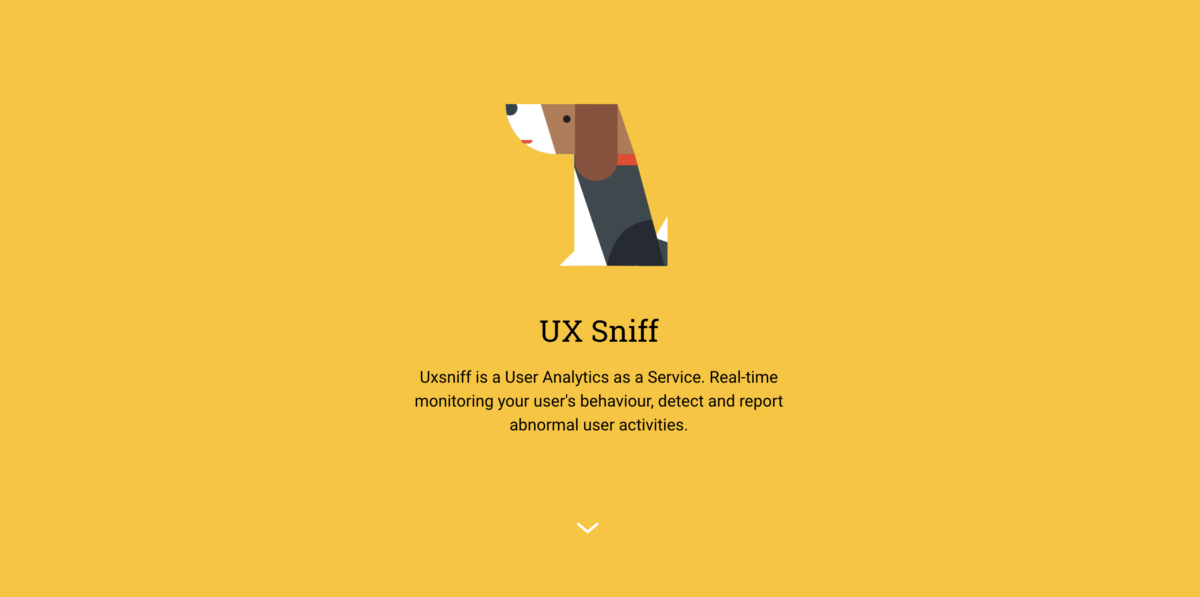Initially, UX Sniff is simply a piece of tracking code that track all the user mouse activities on the website. All the click data will be collected and consolidated into Google Sheet.
After that, a crazy amount of formulas need to be done in Google sheet in order to have some meaningful output.


The UX consultation service continues for around 2 years in this fashion. I’ve then realized that I can never scale my consultation service with all these manual processes. So, I’ve decided to automate these reports.
What are the tradeoffs of transforming to a platform?
Is there any tradeoffs for transforming a manual UX consultation service to an automated platform? Yes there are.
First of all, all my client will no longer receive UX reports that focus on their business/website. Secondly, The value proposition of UX Sniff has changed. UX Sniff will become a SaaS instead of a dedicated consultation service.
However, UX Sniff will be a scalable platform, way affordable, subscription based UX analytics service.
The core value
I keep reminding myself that I must keep the core value of my initial UX consultation available in the platform whenever it’s possible.
The core value is a very simple concept that I’ve learned from the business owners during my private UX consultation.
What the business owners want is a Helper rather than a tool. You can purchase the best tools in the world but you still need the right person to use it, look at it and tell you what to do next.
For instance, they don’t really care how cool is your graph and how informative is your report. For the business owners, what they want is some actionable matrix.
Pei Yong, you know what… What I actually value is your findings and recommendations after you have done analyze the reports. I don’t really read them, you do and you tell me what to do.
singaporebrides.com
So, the goal is to make the platform a virtual assistant. To be able to tell what and when things gone wrong.
UX Sniff’s goal statement in short:
UX Sniff will be the virtual UX consultant for websites, automatically detects and reports unusual user activities and behavior.
The goal is simple but not easy to achieve, and I am heading there.
